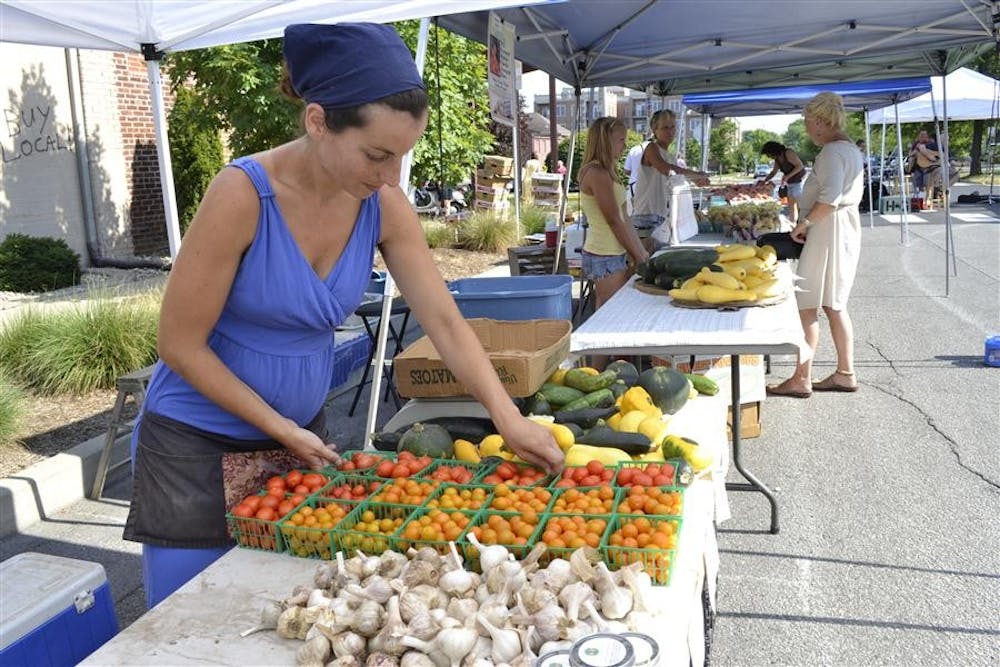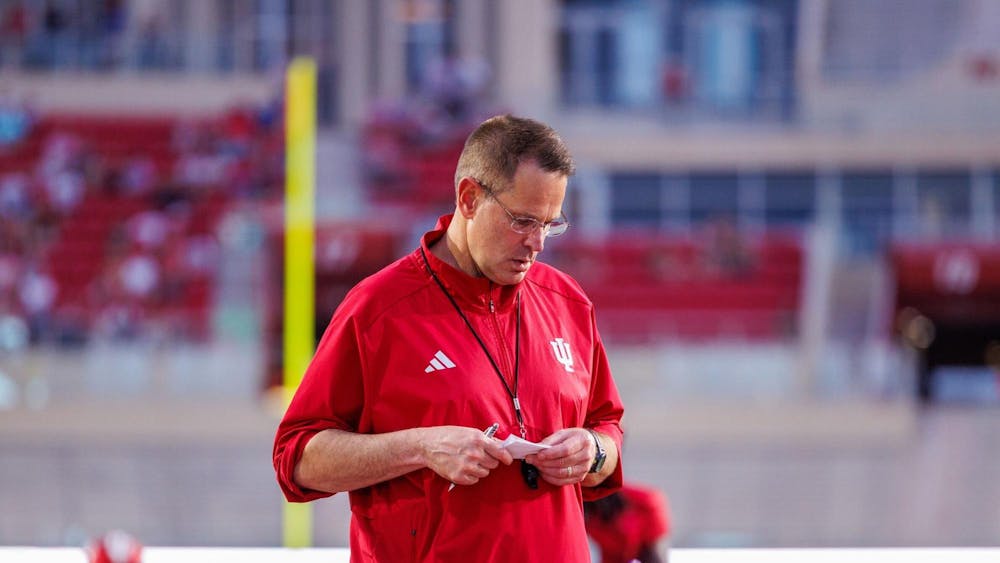Some are accountants and service agents. Some are economists and marketers.
But a farmer’s primary career title is that of a producer. Sometimes, producers can’t control what they make.
As of June 5, the Indiana State Climate Office declared 68.8 percent of Monroe County in a state of severe drought. Most experts estimate rainfall to be down about 14 inches.
While precipitation is down, temperature is up. Indiana hasn’t seen a summer this hot since 1988, the year droughts at Yellowstone National Park caused the largest wildfires in U.S. history.
Indiana lost $40 million in crop-related expenditures that year.
Today, farmers are utilizing a number of strategies to avoid reliving the 1988 dry season again.
“If we’re on top of it, we’ll start planting according to what the weather’s doing,” said Amanda McKenzie, part-time operator at the Center for Community Empowerment.
The Center is a small operation that grows produce such as tomatoes, potatoes and peppers.
So far, McKenzie said the business has lost an estimated $5,000 in produce because of the drought.
The farm has had to invest in fences and extra water to protect crops.
At one point, Michael Hicks, director of the center, questioned if the resources would be available to pay himself.
“Working with a lot of diversity is our way of compensating,” McKenzie said. “It must be hard for farmers that only do one or two crops.”
The center has been working to plant produce that does not require an intensive irrigation system to maintain. Large numbers of squash, zucchini, and about 10,000 heads of garlic are currently curing on the garden’s grounds.
“The bugs are away, and so are the vampires,” McKenzie said.
Despite efforts, however, McKenzie said the loss has still been devastating.
“Droughts happen, it’s just the cycle of the seasons,” McKenzie said. “But we can see changes from day to day.
We were there on a Tuesday and went back on a Friday, and everything was just completely gone. It’s insane.”
About 75 percent of Indiana farmers, including the center, carry crop insurance, said Andy Detrich, director of public relations for the Indiana Farm Bureau.
For these producers, about 65 percent of a crop’s overall estimated value will be reimbursed.
But McKenzie said she didn’t believe crop insurance would be able to sustain the center. In her opinion, there's no way to quantify the amount of crops lost.
"We understand it wasn't us, but I don't think there's any way to prove exactly what has been taken," she said.
On June 1 the U.S. Department of Agriculture rated more than 90 percent of the nations crop acres as "short to very short" in soil moisture.
The House agriculture committee addressed this problem in their version of the new farm bill, voted on early Thursday.
The bill includes a provision that extends the amount of federally subsidized crop insurance available for farmers during natural disasters, like this dry season.
Congress has until Sept. 30 to agree on the bill.
“I don’t have a crystal ball,” Detrich said.
“But the farmers I’ve talked to say they would qualify this season’s crop as a
disaster.”
If passed, the program could extend through the 2012 year, and reimburse
farmers for crops and livestock loss caused by the bad weather.
Currently, farmers have no federal resources to carry them through this harsh season.
Their lower yields will impact the marketplace.
In the short term, however, it is the farmers, and farming communities, that will be affected.
Monroe County is mainly a horse farming community. The drought has caused local farmers to revert to feeding their animals hay, instead of allowing them to graze on green pastures.
In the past week, the price of hay has increased to $220 per ton, according to the Indiana Forage Council.
“Hay is fine for animals,” said Robin Hobson, co-operator of Gaston Farm.
“But when the grass should be growing, and instead they’re eating hay that we store to feed them over the winter, possibly people could end up spending more money on hay to replenish their coffers in the winter time.”
Hobson said Gaston Farm received about 2 inches of rain during the weekend.
She and her husband, Jason, let the animals outside to enjoy the storm. She said they seemed relieved.
“I have lived in Indiana most of my life, and I have never experienced 106 degree temperature,” Hobson said. “At a certain point, it’s bad. There’s no degree of bad, it’s just bad.”
Severe drought in Monroe County equates to loss in local yield, economy

Get stories like this in your inbox
Subscribe





